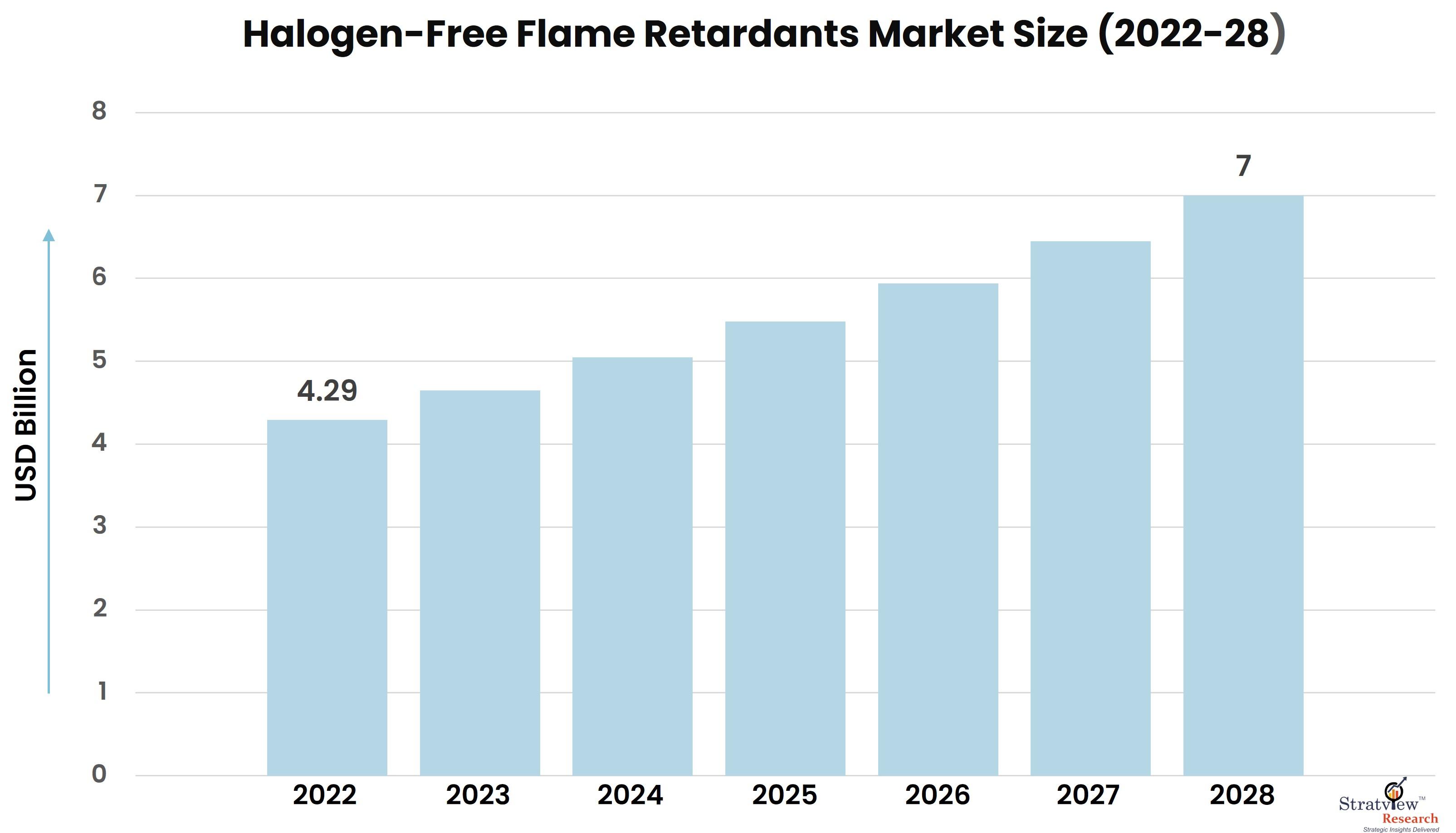According to Stratview Research, the halogen-free flame retardants market was estimated at USD 4.29 billion in 2022 and is likely to grow at a CAGR of 8.52% during 2023-2028 to reach USD 7 billion in 2028.
In the ever-changing landscape of fire safety, the Halogen-Free Flame Retardants Market emerges as a critical player, driving the evolution of fire-resistant solutions towards a more sustainable and environmentally conscious future. Halogen-free flame retardants represent a revolutionary shift from traditional flame-retardant materials, offering enhanced safety without compromising on ecological considerations. This article explores the trajectory of the Halogen-Free Flame Retardants Market, navigating through trends, innovations, and the transformative impact these solutions have on fire safety.
Rising Demand for Sustainable Fire Safety:
The Halogen-Free Flame Retardants Market is witnessing a surge in demand driven by the growing emphasis on sustainability. As industries and consumers alike prioritize eco-friendly solutions, halogen-free flame retardants have become a beacon of fire safety evolution, offering a greener alternative to conventional fire-retardant materials.
The Evolution Beyond Halogens:
Traditional flame retardants often contain halogens such as bromine or chlorine, which can pose environmental and health concerns. The Halogen-Free Flame Retardants Market marks a departure from these halogenated compounds, opting for alternative formulations that provide effective fire protection without the associated environmental drawbacks.
Greening the Flames: Sustainable Solutions in Focus:
Sustainability is a central theme in the Halogen-Free Flame Retardants Market. Manufacturers are actively developing formulations that align with environmentally friendly practices. These sustainable solutions not only enhance fire safety but also contribute to reducing the ecological footprint associated with fire-retardant materials.
Innovations Driving Fire Safety:
Innovation is a driving force in the Halogen-Free Flame Retardants Market. Researchers and manufacturers are continuously exploring new technologies and formulations to improve the efficacy and versatility of halogen-free flame retardants. These innovations are reshaping the landscape of fire safety, offering advanced solutions for a wide range of applications.
Beyond Compliance: Meeting Stringent Regulations:
The Halogen-Free Flame Retardants Market responds to increasingly stringent regulations governing fire safety and chemical usage. As governments and regulatory bodies tighten standards, the market is evolving to provide flame retardant solutions that not only meet but exceed compliance requirements, ensuring the highest level of safety in various industries.
Advantages of Halogen-Free Formulations:
Halogen-free flame retardants bring a host of advantages to the table. Unlike their halogenated counterparts, these formulations are less likely to produce toxic byproducts during combustion. Additionally, they offer improved heat stability, reducing the risk of release of hazardous substances in the event of a fire.
Diverse Applications: Navigating Industries:
The versatility of halogen-free flame retardants extends across a multitude of industries. From electronics and construction materials to textiles and automotive components, these flame retardants find applications in diverse sectors. This widespread adaptability positions halogen-free solutions as indispensable tools in ensuring fire safety across various products and materials.
Safety First: Meeting Stringent Fire Performance Standards:
Fire safety is non-negotiable, and the Halogen-Free Flame Retardants Market prioritizes meeting stringent fire performance standards. Whether in building materials, electrical components, or transportation applications, halogen-free flame retardants provide the necessary fire protection without compromising on safety or environmental impact.
Challenges and Opportunities in Market Growth:
While the Halogen-Free Flame Retardants Market presents opportunities for growth and innovation, it also faces challenges. Balancing the need for fire safety with ecological considerations requires ongoing research and development. Manufacturers are actively addressing these challenges to unlock the full potential of halogen-free flame retardants.
Educating Stakeholders: Shaping the Future of Fire Safety:
Education and awareness play a crucial role in the Fire Safety Evolution driven by halogen-free flame retardants. Manufacturers, industry stakeholders, and end-users alike must be informed about the benefits and applications of these innovative solutions, fostering a collective commitment to enhancing fire safety while embracing sustainable practices.
Conclusion:
As the Halogen-Free Flame Retardants Market navigates the landscape of fire safety evolution, it presents a paradigm shift towards sustainable and effective solutions. The market's commitment to innovation, sustainability, and meeting stringent standards positions halogen-free flame retardants as catalysts for change in the realm of fire safety. In navigating the future, these flame retardants serve as guardians against the destructive force of fire, ushering in a new era where safety, sustainability, and innovation harmoniously coexist.
